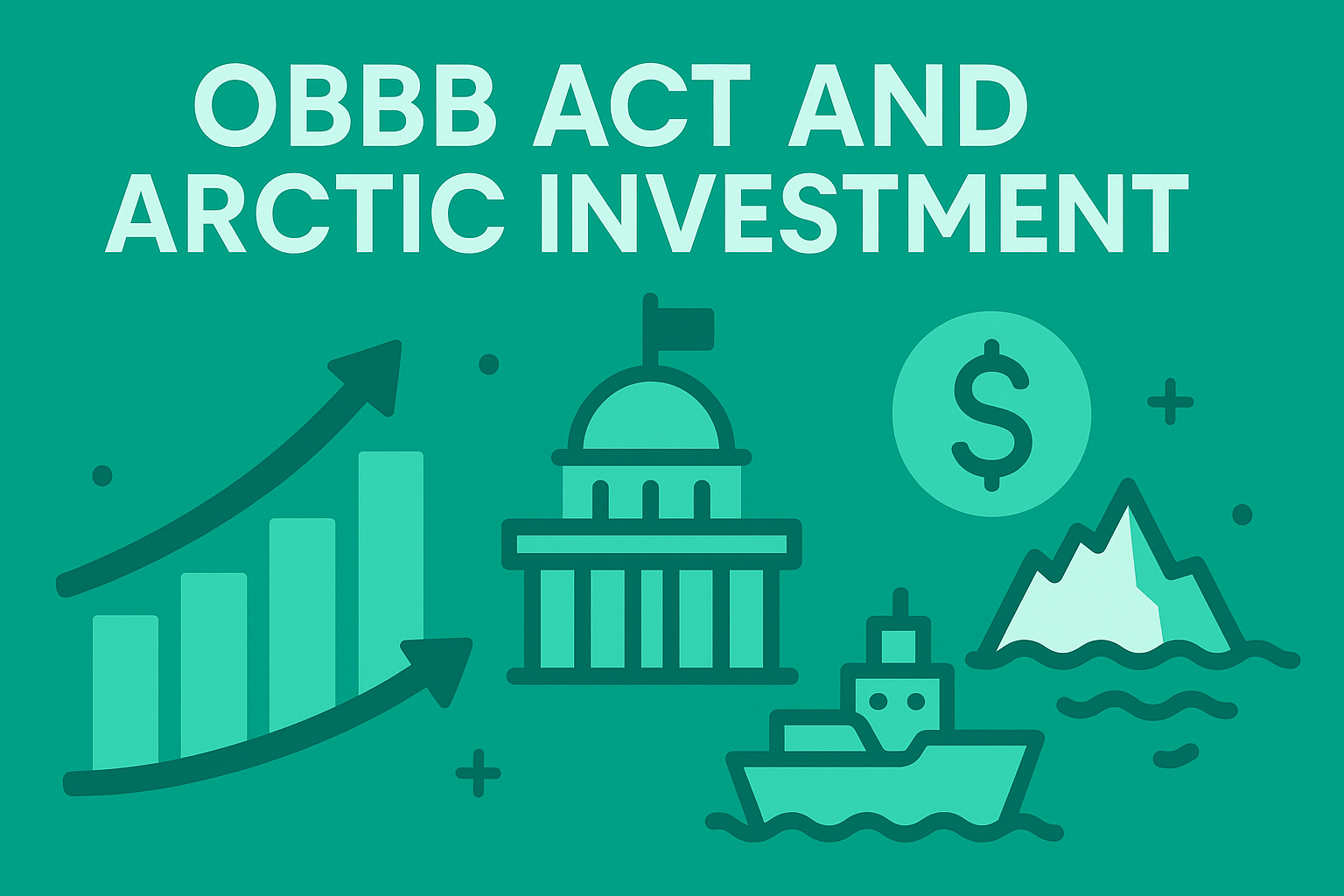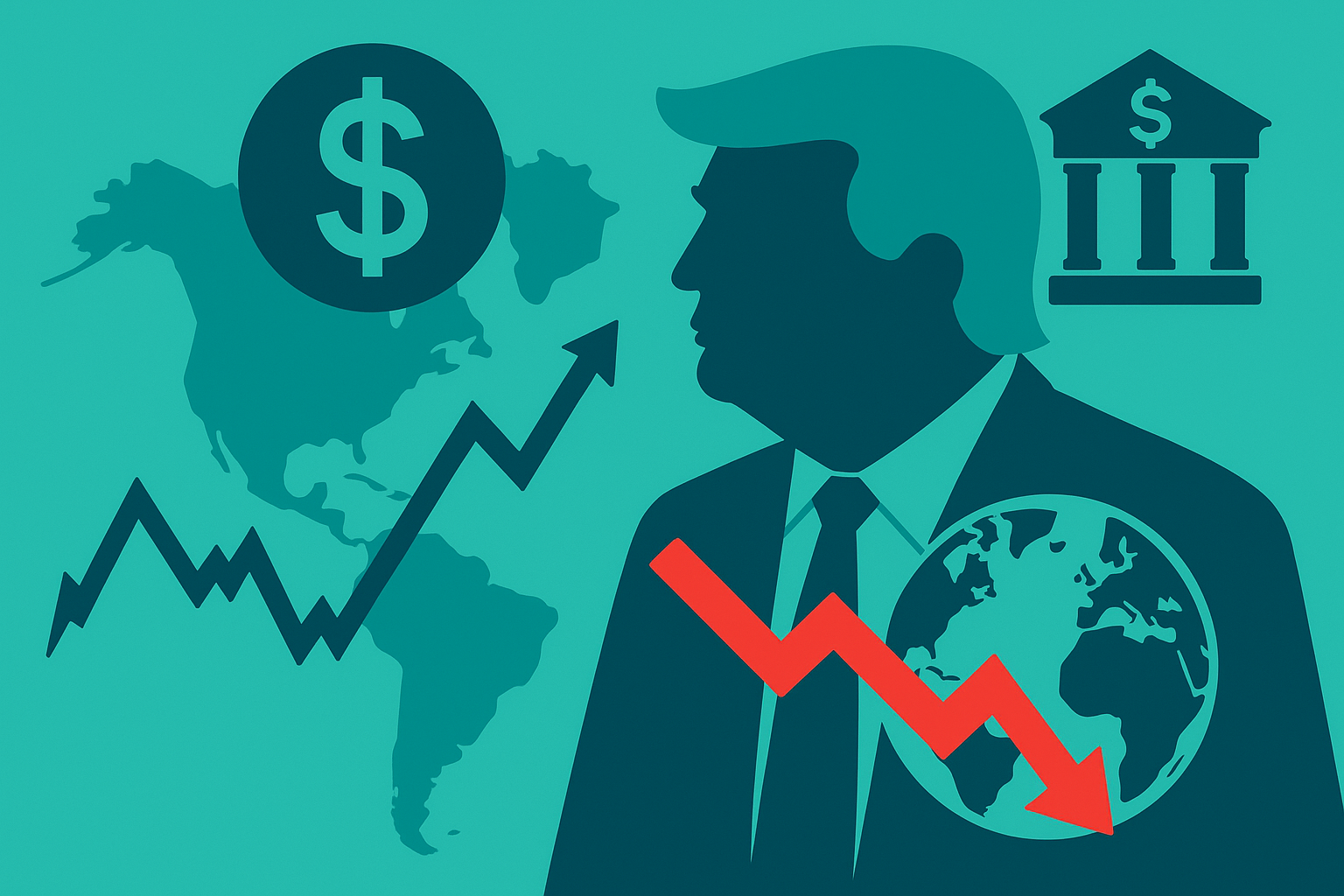― Growth Strategy or Fiscal Breakdown? The Dilemma of Polar Infrastructure and Long-Term Sustainability ―
By: Senior Economist & Policy Analyst
- Introduction: The Structure of the OBBB Act
- Arctic Shipping and Energy Investment: Strategic National Interests
- Economic Impact: Near-Term Gains vs. Long-Term Risks
- Geopolitical Dimensions: Arctic as a Strategic Theater
- Income Distribution and Social Equity
- Policy Recommendations for a Sustainable Arctic Strategy
- Conclusion: Growth or Sustainability — Or Both?
Introduction: The Structure of the OBBB Act
Signed in July 2025, the “One Big Beautiful Bill” (OBBB Act) is a sweeping legislative package from the Trump administration designed to stimulate the U.S. economy. Encompassing tax reforms, defense and energy spending, infrastructure expansion, and entitlement cuts, the package totals over $4.8 trillion in expenditures and approximately $2.3 trillion in tax reductions. Among the most strategically significant elements is the inclusion of provisions aimed at developing the Arctic region and related shipping routes.
Arctic Shipping and Energy Investment: Strategic National Interests
Unlocking Northern Resources
The OBBB Act mandates commercial leasing of the Arctic National Wildlife Refuge (ANWR) and the National Petroleum Reserve–Alaska (NPR-A), reversing long-standing environmental protections. This opens vast tracts of untapped hydrocarbons to energy developers, aiming to bolster the U.S.’s energy independence over the coming decade.
Infrastructure for a Northern Trade Corridor
The Northern Sea Route (NSR) is gaining attention as Arctic ice recedes. The OBBB Act indicates federal support for port construction, satellite infrastructure, and icebreaker fleet expansion. These investments lay the groundwork for the U.S. to compete in future trans-Arctic shipping, potentially reducing Asia-Europe cargo times by up to 16 days.
Economic Impact: Near-Term Gains vs. Long-Term Risks
| Perspective | Effect | Metrics & Forecasts |
|---|---|---|
| GDP Growth | ✅ Positive | +1.2% projected by 2026 (Tax Foundation) |
| Job Creation | ✅ Positive | Up to 1.2 million jobs (energy and construction) |
| Fiscal Deficit | ❌ Negative | +$2.8 trillion over 10 years (CBO estimate) |
| Energy Security | ✅ Positive | +20% oil reserve capacity by 2030 |
| Environmental Cost | ❌ Severe Risk | Ice melt and ecosystem disruption (Arctic Council) |
Commentary:
The OBBB Act can be seen as a “fiscal steroid” — delivering short-term economic gains at the cost of long-term fiscal integrity and environmental sustainability. While GDP and jobs are projected to rise, the ballooning deficit and erosion of climate policy credibility are major structural liabilities.
Geopolitical Dimensions: Arctic as a Strategic Theater
Russia currently dominates Arctic shipping through the NSR, and China is advancing its “Polar Silk Road” initiative. The OBBB Act’s emphasis on infrastructure and resource exploitation reflects a deliberate attempt to secure U.S. geopolitical presence in the Arctic, counterbalancing Sino-Russian advances.
Income Distribution and Social Equity
The Act skews heavily in favor of upper-income households:
| Income Group | Share of Tax Benefits |
|---|---|
| Top 20% | ~76% |
| Middle 40% | ~18% |
| Bottom 40% | ~6% (with many facing net losses) |
Significant cuts to SNAP, Medicaid, and housing assistance, alongside tax relief for high earners, risk exacerbating socioeconomic divides, especially in urban and Democratic-leaning regions.
Policy Recommendations for a Sustainable Arctic Strategy
To align the Arctic investment component with fiscal responsibility and global standards:
- Mandatory ESG Risk Assessments
→ Third-party environmental impact reviews prior to Arctic lease approvals. - Hybrid Energy Model
→ Maintain federal incentives for clean energy to avoid crowding out green innovation. - Progressive Tax Realignment
→ Cap deductions for high-income groups and restore transfer payments for the vulnerable. - Fiscal Responsibility Clause
→ Link spending expansions to identified revenue offsets (e.g., partial corporate tax reversal).
Conclusion: Growth or Sustainability — Or Both?
The OBBB Act and its Arctic provisions serve as a bold move toward energy dominance and strategic positioning. Yet, they come with severe trade-offs: growing inequality, unsustainable debt, and global climate backlash. True economic leadership must go beyond GDP growth — it must expand the freedom of future generations to choose their path.
Balanced policymaking, inclusive investment, and climate-compatible infrastructure are not mutually exclusive goals. The question facing America today is whether it can pursue all three — before the polar ice, or political capital, melts away.


